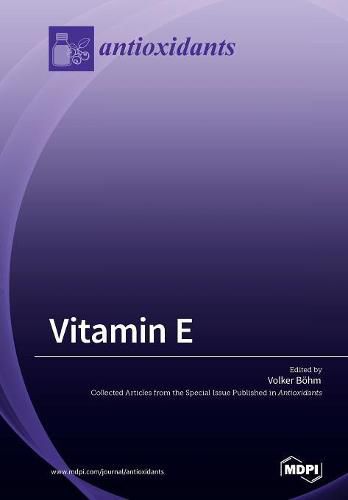Readings Newsletter
Become a Readings Member to make your shopping experience even easier.
Sign in or sign up for free!
You’re not far away from qualifying for FREE standard shipping within Australia
You’ve qualified for FREE standard shipping within Australia
The cart is loading…






This title is printed to order. This book may have been self-published. If so, we cannot guarantee the quality of the content. In the main most books will have gone through the editing process however some may not. We therefore suggest that you be aware of this before ordering this book. If in doubt check either the author or publisher’s details as we are unable to accept any returns unless they are faulty. Please contact us if you have any questions.
Vitamin E is the major lipid-soluble antioxidant in the cell antioxidant system and is exclusively obtained from the diet. In 1922, vitamin E was discovered as a dietary factor essential for reproduction in rats. Meanwhile, vitamin E has revealed many more important molecular properties, such as the scavenging of reactive oxygen and nitrogen species with consequent prevention of the oxidative damage associated with many diseases. In addition, the modulation of signal transduction and gene expression in antioxidant and non-antioxidant manners was shown for vitamin E.
This Special Issue highlights some of the recent advances in vitamin E research, showing on the one hand the status quo and providing, on the other hand, new insights into functions and physiological relevance. Thus, the current knowledge of tocochromanol biosynthesis in plants and future challenges regarding the understanding of its regulation are presented. Another paper describes the fate of vitamin E in the human gastrointestinal lumen during digestion. During the metabolism of vitamin E, the long-chain metabolites 13’-hydroxychromanol and 13’-carboxychromanol are formed by oxidative modification of the side-chain. Their occurrence in human serum indicates a physiological relevance. Another paper describes the membrane distribution of -tocopherol in brain regions of adult rhesus monkeys, also looking for associations between membrane -tocopherol and the content of polyunsaturated fatty acids.
$9.00 standard shipping within Australia
FREE standard shipping within Australia for orders over $100.00
Express & International shipping calculated at checkout
This title is printed to order. This book may have been self-published. If so, we cannot guarantee the quality of the content. In the main most books will have gone through the editing process however some may not. We therefore suggest that you be aware of this before ordering this book. If in doubt check either the author or publisher’s details as we are unable to accept any returns unless they are faulty. Please contact us if you have any questions.
Vitamin E is the major lipid-soluble antioxidant in the cell antioxidant system and is exclusively obtained from the diet. In 1922, vitamin E was discovered as a dietary factor essential for reproduction in rats. Meanwhile, vitamin E has revealed many more important molecular properties, such as the scavenging of reactive oxygen and nitrogen species with consequent prevention of the oxidative damage associated with many diseases. In addition, the modulation of signal transduction and gene expression in antioxidant and non-antioxidant manners was shown for vitamin E.
This Special Issue highlights some of the recent advances in vitamin E research, showing on the one hand the status quo and providing, on the other hand, new insights into functions and physiological relevance. Thus, the current knowledge of tocochromanol biosynthesis in plants and future challenges regarding the understanding of its regulation are presented. Another paper describes the fate of vitamin E in the human gastrointestinal lumen during digestion. During the metabolism of vitamin E, the long-chain metabolites 13’-hydroxychromanol and 13’-carboxychromanol are formed by oxidative modification of the side-chain. Their occurrence in human serum indicates a physiological relevance. Another paper describes the membrane distribution of -tocopherol in brain regions of adult rhesus monkeys, also looking for associations between membrane -tocopherol and the content of polyunsaturated fatty acids.